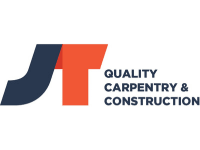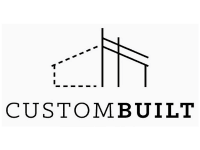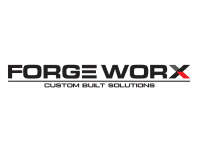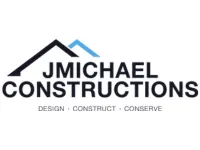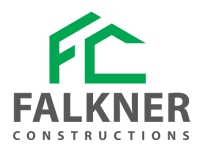In Australia’s construction industry, precise estimating plays a pivotal role in ensuring project success. From Sydney’s urban skyscrapers to regional developments in Western Australia, accurate estimates help builders manage costs, allocate resources, and meet deadlines.
The construction market in Australia is diverse, with varying regulations, material costs, and labour demands depending on the location. This guide is your go-to resource for understanding the importance of construction estimating, mastering the tools and techniques, and leveraging professional services to ensure cost-effective building practices.
Why It Matters: Accurate estimates prevent project delays, reduce budget overruns, and build trust with clients. Whether you’re a builder managing small residential projects or large-scale developments, mastering the art of estimating is essential.
Challenges Faced by Builders Across Australia
The construction landscape in Australia presents unique challenges for builders. From fluctuating material prices to regional labour shortages, these hurdles can impact project timelines and budgets. Understanding and addressing these challenges through accurate estimating is essential for project success.
Key Challenges in Australian Construction:
1. Variable Material Costs
- Material costs in Australia can fluctuate significantly based on region and market conditions.
- Example: Timber prices may rise in Queensland due to increased demand during the cyclone rebuilding season.
- Example: Timber prices may rise in Queensland due to increased demand during the cyclone rebuilding season.
- Global supply chain disruptions also affect availability and pricing.
2. Labour Shortages
- Skilled labour shortages are a common issue in Australia, particularly in rural and regional areas.
- Urban hubs like Sydney and Melbourne may have higher labour availability but at a premium cost.
- Urban hubs like Sydney and Melbourne may have higher labour availability but at a premium cost.
- Builders must account for location-specific wage rates and labour availability in their estimates.
3. Compliance with Regional Regulations
- Australian construction projects are governed by state-specific building codes and standards.
- Example: Projects in Victoria may require bushfire-resilient designs, adding to material and design costs.
- In Queensland, cyclone standards for roofing and structural integrity can influence project budgets.
- Example: Projects in Victoria may require bushfire-resilient designs, adding to material and design costs.
4. Unexpected Costs
- Unforeseen issues, such as extreme weather conditions or unexpected site challenges, can derail budgets if not accounted for in contingency planning.
How Accurate Estimating Solves These Challenges:
- Prepares for Variability: By incorporating real-time material and labour costs, builders can reduce the impact of price fluctuations.
- Accounts for Local Dynamics: Regional expertise helps ensure estimates align with local labour and material markets.
- Reduces Risk: Contingency allowances mitigate financial risks from unforeseen circumstances.
- Ensures Compliance: Accurate estimates factor in additional costs associated with meeting state-specific regulations.
Pro Tip: Builders should regularly update their estimating processes to reflect market changes and local building requirements, ensuring estimates remain reliable and actionable.
Real-World Scenario:
A builder in Northern Queensland faced rising material costs after a cyclone disrupted the supply chain. By leveraging professional estimating services, they incorporated a dynamic pricing model into their estimate, ensuring the project remained on budget despite fluctuations.
Tools and Techniques for Construction Estimating in Australia
Accurate estimating requires the right mix of tools and techniques to streamline the process, reduce errors, and account for regional variations. Australian builders can benefit from leveraging modern technology while adapting traditional methods to local market conditions.
Modern Tools for Construction Estimating
- Buildsoft
- A popular software in Australia for digital takeoffs and cost estimation.
- Features allow for quick calculations and easy adjustments based on changing project requirements.
- A popular software in Australia for digital takeoffs and cost estimation.
- CostX
- Widely used for precise quantity takeoff and cost planning.
- Integrates well with BIM (Building Information Modelling), making it ideal for large-scale projects.
- Widely used for precise quantity takeoff and cost planning.
- Cordell Cost Guides
- Provides region-specific construction costs, helping builders in Australia stay updated on market trends.
- Provides region-specific construction costs, helping builders in Australia stay updated on market trends.
- Excel Templates
- A cost-effective option for smaller projects, allowing for customizable spreadsheets to track costs and materials.
Traditional Techniques Still in Use
- Manual Quantity Takeoff
- Involves measuring plans manually to calculate materials and labour.
- Though time-intensive, it remains a reliable method for smaller projects.
- Involves measuring plans manually to calculate materials and labour.
- Local Pricing Databases
- Builders rely on regional cost data for materials and labour to ensure estimates reflect real-world conditions.
Why the Right Tools Matter
- Improved Accuracy: Digital tools eliminate human error, ensuring more precise calculations.
- Time Efficiency: Automating tasks like quantity takeoff and cost analysis speeds up the estimating process.
- Scalability: Advanced tools like CostX adapt to projects of all sizes, from residential builds to large-scale commercial developments.
Techniques for Estimating Success
- Contingency Planning
- Allocate a percentage (typically 5-10%) of the total budget for unforeseen expenses, such as weather delays or material shortages.
- Allocate a percentage (typically 5-10%) of the total budget for unforeseen expenses, such as weather delays or material shortages.
- Dynamic Pricing Models
- Update estimates frequently to reflect current market rates, especially for materials like steel or timber.
- Update estimates frequently to reflect current market rates, especially for materials like steel or timber.
- Scenario Analysis
- Prepare multiple estimates for different project scenarios (e.g., delays, material price spikes) to help clients make informed decisions.
Combining Tools and Techniques
The most successful builders in Australia adopt a hybrid approach, using modern tools for speed and accuracy while relying on traditional techniques for local insights. For example, pairing CostX with Cordell Cost Guides ensures both precision and relevance to the Australian market.
Pro Tip: Regular training on estimating tools and software ensures your team stays efficient and up to date with the latest industry practices.
Benefits of Accurate Estimating for Builders in Australia
Accurate construction estimating is more than just crunching numbers—it’s a strategic tool that ensures builders meet client expectations, manage resources effectively, and stay competitive in Australia’s dynamic construction market.
1. Improved Financial Planning
Accurate estimates provide a comprehensive view of project costs, enabling builders to:
- Set Realistic Budgets: Avoid underestimating expenses that lead to financial strain.
- Allocate Resources Efficiently: Ensure funds are distributed appropriately across project stages.
Example: A Melbourne-based builder used detailed estimating to plan costs for a high-rise project, ensuring enough budget was allocated for unforeseen delays.
2. Competitive Advantag
Builders who offer precise and transparent estimates gain a competitive edge by:
- Building trust with clients through clear communication of costs.
- Winning more tenders by presenting professional and detailed proposals.
Case Study: A construction company in Brisbane increased its tender success rate by 30% after adopting professional estimating software and providing clients with detailed cost breakdowns.
3. Risk Mitigation
Accurate estimating minimizes financial and operational risks by:
- Preparing for Contingencies: Accounting for unexpected costs like price hikes in materials or delays due to extreme weather.
- Avoiding Overruns: Reducing the likelihood of exceeding project budgets.
4. Enhanced Client Satisfaction
Clients appreciate builders who provide reliable and consistent estimates. This leads to:
- Fewer disputes over unexpected costs.
- Strengthened relationships and repeat business opportunities.
Example: A residential builder in Sydney retained 70% of clients for subsequent projects by consistently delivering within estimated budgets.
5. Compliance with Australian Standards
Accurate estimates factor in costs associated with meeting regional building codes and standards, including:
- Bushfire-resilient construction in Victoria.
- Cyclone-proof designs in Queensland.
- Energy efficiency requirements nationwide.
Pro Tip: Builders who prioritize compliance in their estimates avoid fines, delays, and potential legal issues, ensuring smoother project execution.
6. Time Efficiency
Detailed and accurate estimates reduce delays caused by:
- Miscalculations requiring revisions.
- Late procurement of materials due to under-budgeting.
Industry Insight: Builders using modern estimating tools, like CostX or Buildsoft, save up to 20% of the time typically spent on manual calculations.
7. Better Decision-Making
Accurate estimates allow builders and stakeholders to:
- Make informed choices about materials and labour.
- Optimize designs to fit budgets without compromising quality.
Scenario: A project manager in Perth avoided a costly redesign by using detailed estimates to select alternative materials within budget.
| Benefit | Impact |
| Financial Planning | Clear budgets and efficient resource allocation. |
| Competitive Advantage | Winning more tenders with professional estimates. |
| Risk Mitigation | Preparedness for unexpected costs and delays. |
| Client Satisfaction | Improved trust and repeat business. |
| Compliance | Meeting regional standards to avoid fines or delays. |
| Time Efficiency | Faster estimation process, saving valuable time. |
| Better Decision-Making | Optimized material and design choices based on accurate projections. |
Actionable Insight: Accurate estimates empower builders to operate confidently, efficiently, and competitively across Australia.
Regional Differences in Construction Estimating Across Australia
Australia’s vast geography and diverse construction landscape mean that estimating costs can vary significantly depending on the region. Factors such as material availability, labour costs, and local regulations play a pivotal role in shaping estimates.
1. Urban Areas
Urban hubs like Sydney, Melbourne, and Brisbane present unique challenges for construction estimating:
- Higher Material Costs:
- Demand for materials is high, leading to increased prices.
- Logistics costs are lower due to proximity to suppliers and infrastructure.
- Demand for materials is high, leading to increased prices.
- Labour Availability and Costs:
- Larger skilled labour pools are available, but wages are often higher due to competition.
- Example: Electricians and carpenters in Sydney typically command a premium compared to regional areas.
- Larger skilled labour pools are available, but wages are often higher due to competition.
- Regulatory Requirements:
- Urban projects often involve additional compliance with local council guidelines and zoning laws.
2. Regional and Rural Areas
Estimating for projects in regional or rural Australia differs significantly from urban areas:
- Material Costs:
- Transport costs increase due to the distance from suppliers.
- Some materials may need to be sourced locally, limiting options and potentially increasing prices.
- Transport costs increase due to the distance from suppliers.
- Labour Shortages:
- Fewer skilled workers are available, leading to longer project timelines or the need to import labour from other regions.
- Labour costs may be lower overall but impacted by availability.
- Fewer skilled workers are available, leading to longer project timelines or the need to import labour from other regions.
- Unique Environmental Challenges:
- Example: In Western Australia, remote projects must account for extreme weather conditions that can delay timelines or require specialized materials.
3. State-Specific Regulations
Each state in Australia enforces its own set of building codes and standards, which can influence project costs:
- Victoria:
- Bushfire-prone area requirements add costs for materials like ember guards and fire-resistant cladding.
- Bushfire-prone area requirements add costs for materials like ember guards and fire-resistant cladding.
- Queensland:
- Cyclone-proof construction mandates higher standards for roofing and structural integrity, especially in coastal areas.
- Cyclone-proof construction mandates higher standards for roofing and structural integrity, especially in coastal areas.
- New South Wales:
- Strict energy efficiency standards often necessitate additional insulation and energy-compliant designs.
4. Environmental and Climatic Variations
Climate conditions also impact construction estimating:
- Tropical Regions (e.g., Northern Queensland):
- Cyclone season requires more robust designs and additional costs for weather-resistant materials.
- Cyclone season requires more robust designs and additional costs for weather-resistant materials.
- Arid Regions (e.g., Central Australia):
- Heat and dust necessitate specialized equipment and materials, increasing costs.
- Heat and dust necessitate specialized equipment and materials, increasing costs.
- Temperate Regions (e.g., Tasmania):
- Seasonal weather changes can delay timelines, requiring adjustments in labour scheduling and contingency budgets.
5. Example of Regional Differences
| Region | Material Cost | Labour Availability | Key Regulation |
|---|---|---|---|
| Sydney | High | High | Council-specific zoning laws |
| Queensland (Coastal) | Moderate | Moderate | Cyclone-resistant construction |
| Regional WA | High (transport) | Low | Remote project compliance |
| Victoria | Moderate | High | Bushfire-resistant construction |
How Builders Can Adapt to Regional Differences
- Leverage Local Expertise:
- Partner with local suppliers and subcontractors to reduce costs and improve timelines.
- Example: A builder in Tasmania sourced materials locally to save on transport costs.
- Partner with local suppliers and subcontractors to reduce costs and improve timelines.
- Use Regional Cost Data:
- Incorporate tools like Cordell Cost Guides, which provide location-specific pricing for materials and labour.
- Incorporate tools like Cordell Cost Guides, which provide location-specific pricing for materials and labour.
- Plan for Environmental Conditions:
- Allocate contingency budgets for weather-related delays or environmental challenges.
Pro Tip: Builders who adapt their estimating practices to regional differences not only improve accuracy but also strengthen client trust by demonstrating a deep understanding of local conditions.
Professional Estimating Services for Australian Builders
Accurate estimating is a specialized skill that requires a combination of industry knowledge, experience, and advanced tools. For builders across Australia, partnering with professional estimating services can streamline project planning, improve accuracy, and enhance client satisfaction.
Why Builders Need Professional Estimating Services
- Expertise and Industry Knowledge:
- Professional estimators have deep knowledge of construction processes, material costs, and labour trends across Australia.
- They understand local building codes, regulations, and environmental challenges, ensuring estimates are compliant and realistic.
- Professional estimators have deep knowledge of construction processes, material costs, and labour trends across Australia.
- Time Savings:
- Preparing detailed estimates can be time-consuming for builders. Professional services allow you to focus on core business activities while experts handle the calculations.
- Preparing detailed estimates can be time-consuming for builders. Professional services allow you to focus on core business activities while experts handle the calculations.
- Accuracy and Reliability:
- Advanced tools and techniques ensure precise cost projections, reducing the risk of errors that could derail a project.
- Advanced tools and techniques ensure precise cost projections, reducing the risk of errors that could derail a project.
- Client Confidence:
- Transparent and detailed estimates build trust with clients, leading to smoother project execution and repeat business.
- Transparent and detailed estimates build trust with clients, leading to smoother project execution and repeat business.
Our Services
At Matrix Estimating, we specialize in providing tailored estimating solutions for builders across Australia. Our services include:
- Quantity Surveying:
- Detailed material takeoffs to ensure accurate budgeting and procurement.
- Expert analysis to minimize waste and optimize resource allocation.
- Detailed material takeoffs to ensure accurate budgeting and procurement.
- Cost Planning and Budgeting:
- Comprehensive cost plans that cover every project phase, from initial design to completion.
- Contingency planning to address potential risks and unexpected costs.
- Comprehensive cost plans that cover every project phase, from initial design to completion.
- Bill of Quantities (BOQ) Preparation:
- Detailed BOQs to streamline tendering and procurement processes.
- Ensures all stakeholders have a clear understanding of project requirements.
- Detailed BOQs to streamline tendering and procurement processes.
- Specialized Services:
- Customized solutions for residential, commercial, and industrial projects.
- Expertise in adapting estimates to state-specific regulations and environmental considerations.
- Customized solutions for residential, commercial, and industrial projects.
Why Choose Matrix Estimating?
- Nationwide Expertise: Serving builders in urban centers like Sydney and Melbourne and regional areas across Australia.
- Cutting-Edge Tools: Utilizing advanced estimating software like CostX and Buildsoft for accuracy and efficiency.
- Tailored Solutions: Adapting our services to meet the unique needs of each project.
Ready to Transform Your Projects? Contact Matrix Estimating today to discuss how our professional estimating services can help you succeed.
FAQs About Construction Estimating in Australia
Builders often have questions about the construction estimating process, especially given the unique challenges of Australia’s diverse construction landscape. Below, we answer some of the most frequently asked questions to help you better understand and navigate this critical aspect of project planning.
1. What is the cost of professional estimating services in Australia?
The cost of estimating services varies depending on the project’s size and complexity. For smaller residential projects, fees may be modest, while larger commercial developments with intricate requirements can command higher fees. Investing in professional services ensures accurate estimates and can save money by avoiding costly overruns.
2. How long does it take to prepare a construction estimate?
The time required depends on the scope of the project:
Small projects: A few days.
Medium projects: 1–2 weeks.
Large or complex projects: Several weeks, especially if detailed BOQs or cost plans are required.
Tip: Early engagement with professional estimators can accelerate the process, allowing for adjustments and refinements as the project evolves.
3. What tools do professionals use for estimating in Australia?
Estimators use advanced software and tools tailored to the Australian market, such as:
- CostX: For digital quantity takeoff and cost planning.
- Buildsoft: Ideal for precise material takeoff.
- Cordell Cost Guides: Provides up-to-date regional pricing for materials and labour.
These tools ensure estimates are both accurate and aligned with local conditions.
4. How accurate are professional construction estimates?
Professional estimates are highly accurate, typically falling within a 5–10% margin of actual project costs. This level of precision is achieved through:
Detailed quantity takeoffs.
Up-to-date pricing data.
Comprehensive cost analysis, including contingencies for unexpected changes.
5. What’s the difference between an estimate and a quote?
- Estimate: A preliminary calculation of project costs, often subject to change as details are finalized.
- Quote: A fixed price provided by a contractor based on finalized project plans and specifications.
Key Insight: Estimates help builders plan budgets and resources, while quotes are binding agreements for specific work.
6. Can free tools like Excel be used for estimating?
Yes, free tools like Excel can be used for simple projects. However:
- They lack the precision and efficiency of professional software.
- They require manual data entry, increasing the likelihood of errors.
For complex or large-scale projects, professional tools and expertise are recommended.
7. Do estimates include compliance with Australian building standards?
Yes, professional estimates account for state-specific regulations and standards, such as:
- Bushfire-prone area requirements in Victoria.
- Cyclone-proof construction mandates in Queensland.
- Energy efficiency compliance across Australia.
Pro Tip: Ensure your estimator is familiar with local regulations to avoid costly redesigns or fines.
8. What happens if actual costs exceed the estimate?
If actual costs exceed the estimate, it’s often due to:
- Unforeseen circumstances (e.g., weather delays, material price surges).
- Inaccurate initial data or scope changes during the project.
Professional estimators mitigate this risk by:
- Including contingencies in the estimate.
- Regularly updating estimates to reflect market changes.
Still Have Questions?
If your query isn’t listed here, feel free to reach out to Matrix Estimating. Our expert team is ready to provide tailored advice and accurate estimates for your projects across Australia.







